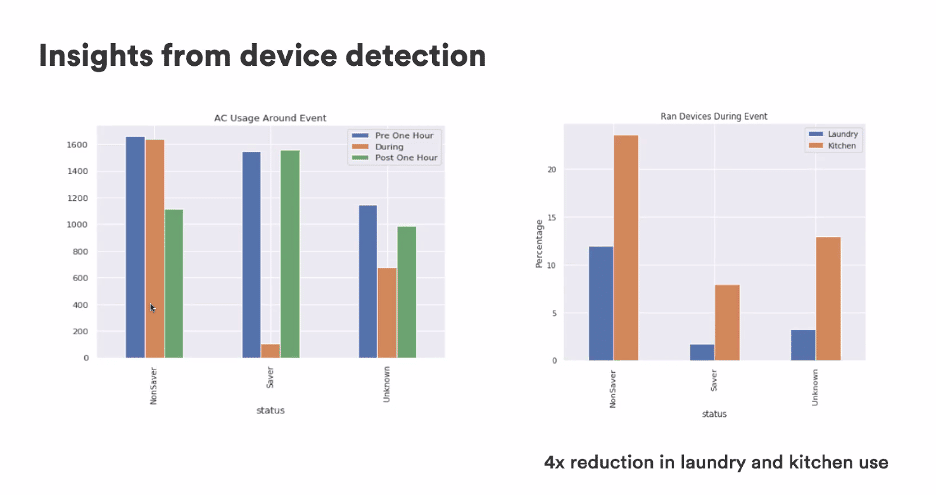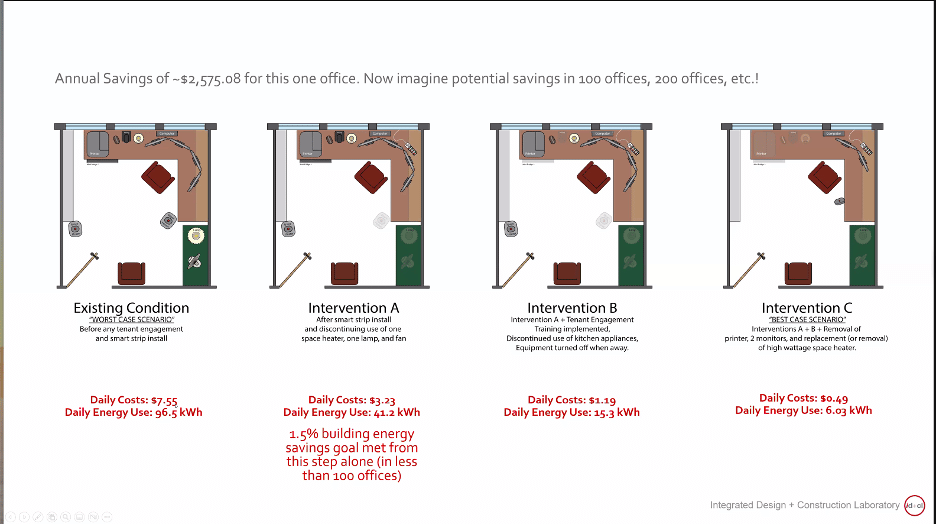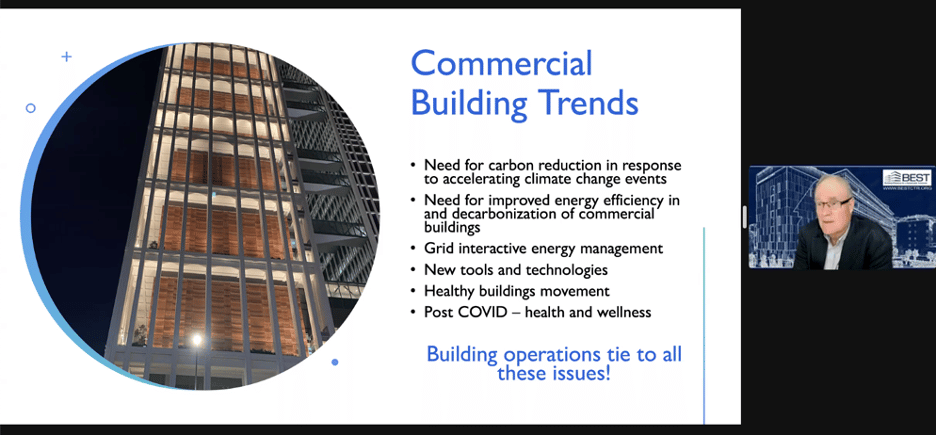As behavioral science advances beyond encouraging general energy-saving behaviors, experts are targeting peak heating and cooling events, engaging building occupants, and focusing on building operators who can have greater influence on how energy is used. To address these recent developments, the Behavior, Energy, and Climate Change (BECC) Conference hosted a webinar on September 15. Titled “New Innovations for Saving Energy in Buildings Through Behavior Change,” the event was moderated by Dr. Reuven Sussman, director of the Behavior and Human Dimensions Program at the American Council for an Energy-Efficient Economy (ACEEE), and featured Dr. George Zavaliagkos, Vice President of Technology and Data Science at Sense; Shelby Ruiz, Research Project Manager at Washington State University; and Dr. Peter Crabtree, Visiting Project Scientist at CIEE and Principal Investigator of the Building Efficiency for a Sustainable Tomorrow (BEST) Center.
Zavaliagkos kicked off the panel by discussing Sense’s work on combining real-time data and rewards to yield energy savings during peak use events. He shared the results of a pilot study conducted with OhmConnect that assessed the impact of customer access to real-time energy information.
“By providing real-time information to the user about what is running in their homes right now, right during the demand response event, we were able to achieve 2.6 times more savings than the typical OhmConnect consumer—just by providing real-time data,” said Zavaliagkos. Noting the importance of consumer engagement, he added that “when you provide awareness about what loads are running in real-time, then you are you are able to achieve better results in demand response events.”

Credit: George Zavaliagkos/Sense
Next, Ruiz shared results from a pilot program to reduce university campus tenants’ energy use. Funded by the Northwest Energy Efficiency Alliance and WSU, the project involves installing small, Link Smart power strips in each office. The strips have a timed feature that enables them to not only switch on and off depending on which devices are active at any given moment but collect real-time data about people’s work behaviors as well.
Ruiz explained that the team was interested in “calculating [campus tenants’] daily typical use before we install the smart strip compared to how that changes when we essentially cut power to those unnecessary devices during off hours or unused hours.” She added that the project is primarily “education-based,” noting that “the university matters, and here’s how we can make you comfortable and save energy. And that tends to be the message that resonates with the most people.”

Credit: Shelby Ruiz/Washington State University
Finally, Crabtree presented his work on training skilled energy professionals to enable maximum energy savings from high performance buildings. “The first thing we should know is that commercial buildings, commercial construction, and building operations are legacy industries,” he opened. “They are governed by traditional organizational structures and norms, and their behaviors are guided essentially by traditional business models.”

Credit: Peter Crabtree/BEST Center
Crabtree then highlighted several technical trends to improving energy efficiency and occupant comfort in buildings, including the incorporation of new technologies into heating, ventilation, and air conditioning (HVAC) equipment, enhanced building automation systems (BAS) and energy management systems (EMS), and standardizing building efficiency operations.
In light of these recent trends and the changing nature of the industry, the BEST Center recognizes the “need for broad, mechanical, and electrical knowledge which we would expect, plus advanced cognitive skills,” he said. “So a lot of the skills are thinking skills, not wrench-turning skills at the operations level.”
“Knowledge is power, and energy awareness is transformative,” concluded Crabtree. “We need to work to give people the information they need to make more intelligent decisions and do better.”

